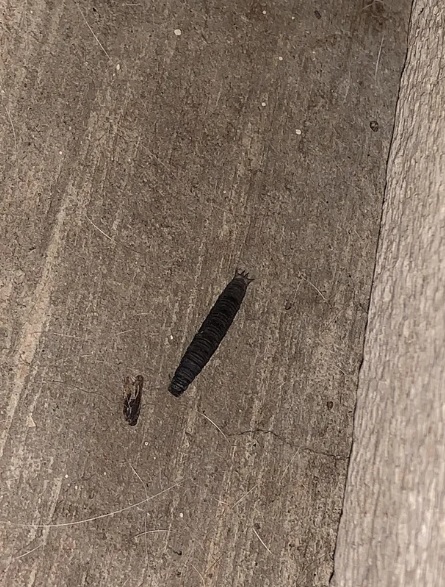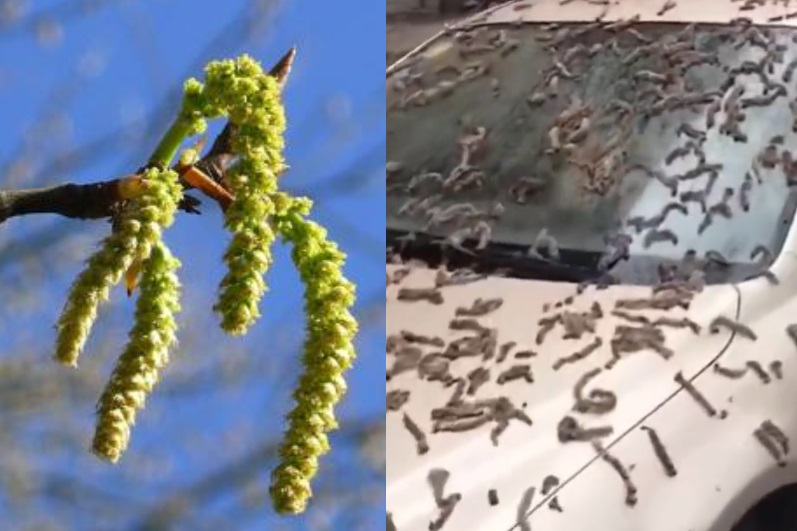Is it Raining Worms in China, Poplar Blossoms, or Crane Fly Larvae? Exploring the Theories Behind the Strange Phenomenon
People who live in the Chinese province of Liaoning China witnessed a bizarre phenomenon recently, a rain of worms. Yes, you read that right. Hundreds of worm-like creatures have been falling from the sky and covering cars, sidewalks and buildings. How did this happen? And what are these creatures exactly? Here’s what we know so far.
What Kind of ‘Worms’ are Raining in China?
The first thing to clarify is that these worms are probably not actually worms. They are likely the larvae of a type of insect called crane flies. Crane flies are also known as mosquito hawks or daddy longlegs, and they look like giant mosquitoes with long legs. They belong to the order Diptera, which includes flies and mosquitoes.
Crane fly larvae are aquatic or semi-aquatic, meaning they live in water or moist soil. They feed on decaying organic matter or plant roots, and they can grow up to 4 cm long. They have a segmented body with tiny hairs and a pair of spiracles (openings for breathing) at the end.
Why are ‘Worms’ Falling From The Sky in China?
There are several possible explanations for how these “worms” ended up raining from the sky in Liaoning China. One is that they were swept up by strong winds or water spouts from nearby lakes or rivers. This phenomenon is known as animal rain, and it has been reported with various animals such as fish, frogs, birds and spiders.
Another theory is that these larvae were part of a mass emergence of adult crane flies that occurs every spring. Crane flies have a short lifespan of only a few days as adults, and they mate and lay eggs during this time. The eggs hatch into larvae that burrow into the soil or water until they pupate and emerge again as adults.
Some experts suggest that these larvae were disturbed by human activities such as construction or farming, and they crawled out of their habitats looking for new ones. They may have then been carried by air currents to different locations.

Are the “Worms” Dangerous?
The good news is that if indeed these “worms” are actually crane fly larvae, they are harmless to humans and animals. They do not bite or sting, and they do not carry any diseases. They may be annoying or disgusting to some people, but they pose no threat. However, they may cause some damage to plants if they feed on their roots or stems. They may also attract predators such as birds or rodents that could cause further problems.
Exploring the Theory of Poplar Blossoms Raining in China
Some people have suggested that what’s being seen are not crane fly larvae or worms, but poplar blossoms. Poplars are deciduous trees that produce fluffy white flowers in springtime. These flowers can be easily blown away by wind and create a snow-like effect. As you’ll see below Poplar Blossoms can have a worm like shape, and theoretically could change color when soaked in water from a storm.

A rain of worms is certainly an unusual sight to behold, but it is not unheard of in nature. As aforementioned these “worms” are likely crane fly larvae that either got lifted by wind or water spouts from their habitats, emerged en masse from their pupation sites, or crawled out due to human disturbance. This event serves as a reminder of how fragile our ecosystems are, and possibly how human activities can affect them in unexpected ways.
Explore Related Articles

How FEDS Found a Woman’s $2 Billion Bitcoin Stash and Discovered...
In a twist that reads like a thriller, 42 year old Jian Wen's sentencing on May 10th wraps up what's been the UK's most eye-opening cryptocurrency case to date.
How Did Jian Wen Allegedly Make Over $2 Billion from a Bitcoin Money Laundering Scheme?
It's a tale of rags to riches,...
Here’s The Strange Reason Why a 500 Pound Black Bear Got...
The most famous black bear in America got his fame for all the wrong reasons. Dubbed 'Hank the Tank' most people would assume the 500 lbs. black bear got his name from his massive size. However, there are other factors at play that make his name a very accurate...
Why a US Regulator is Warning People Not to Store Money...
If you use payment apps like PayPal, Venmo, Cash App or Apple Pay to store your money, you might be putting your funds at risk. That's the warning from the Consumer Financial Protection Bureau (CFPB), a federal agency that oversees consumer financial products and services.
The CFPB said in a...






